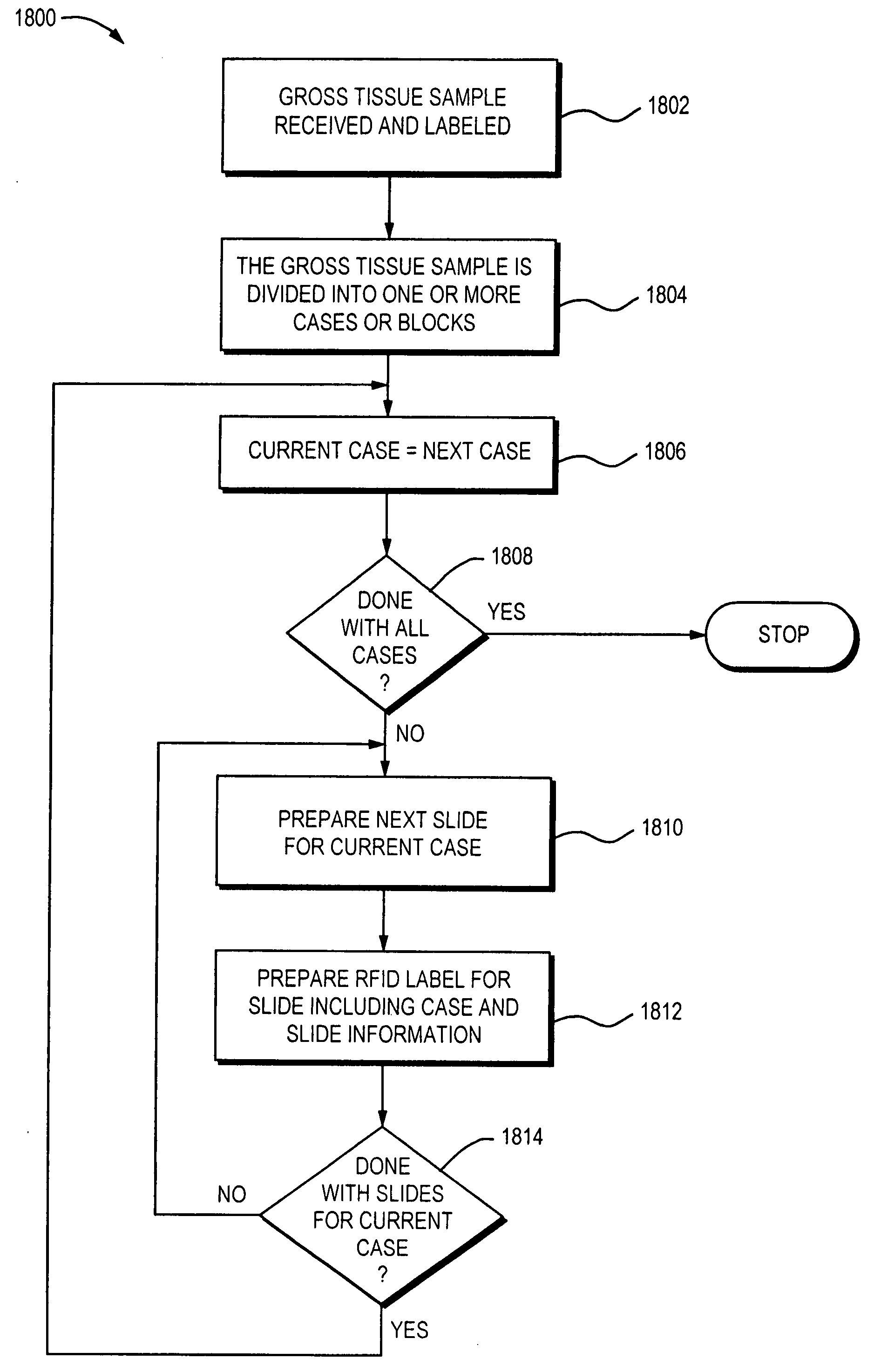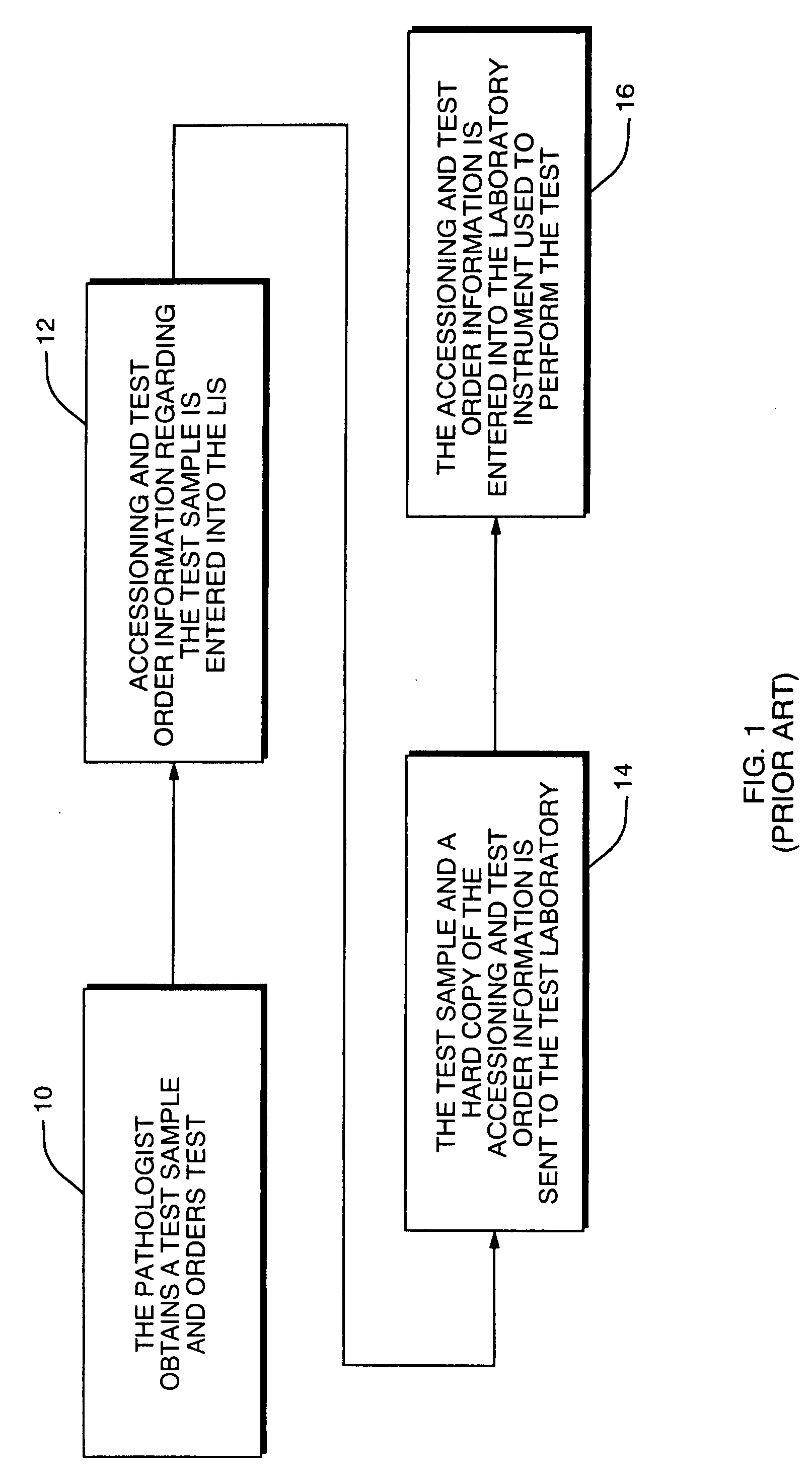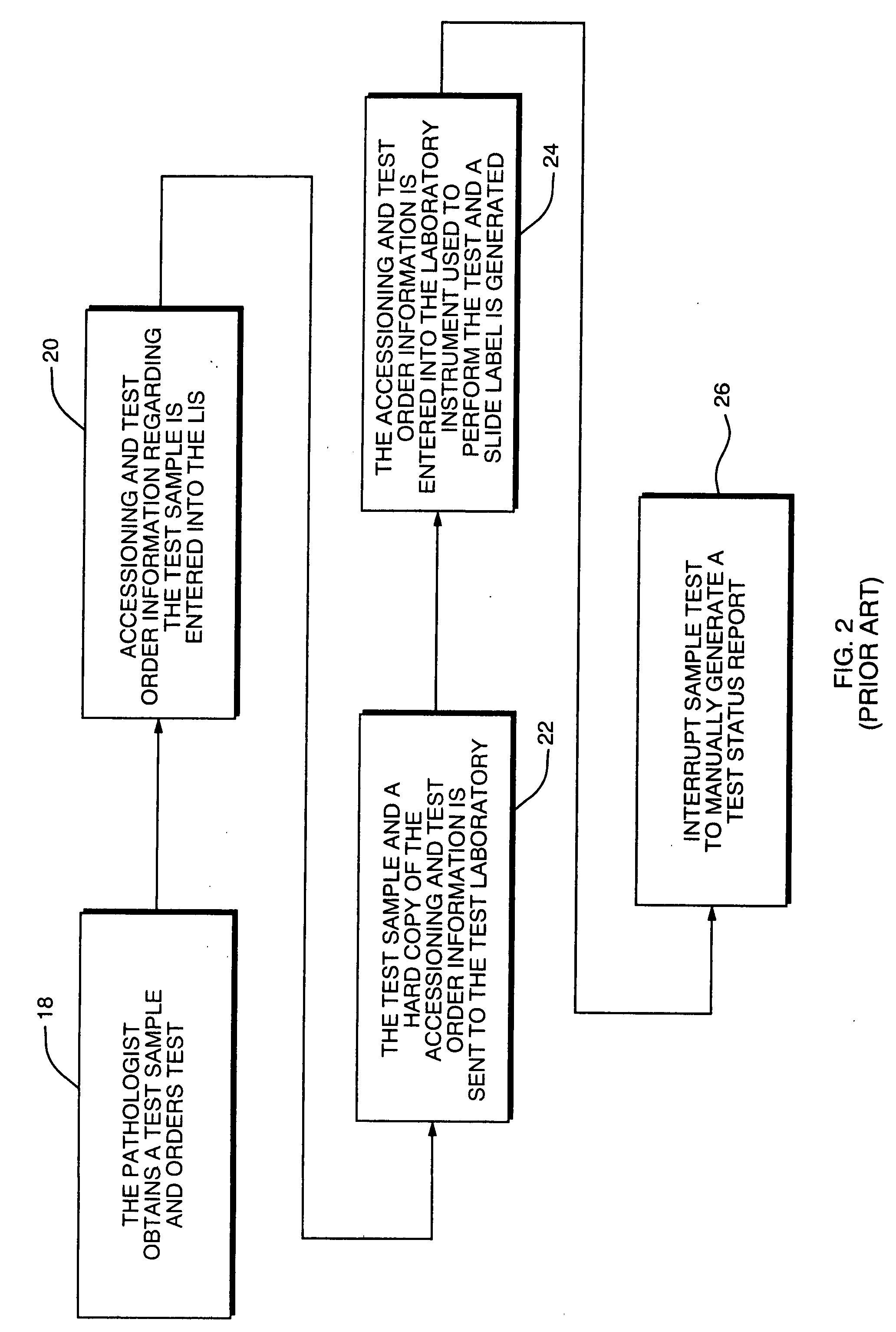Laboratory instrumentation information management and control network
a laboratory instrument and information management technology, applied in the field of data management, can solve the problems of increasing the amount of time it takes to process samples, wasting significant time and energy, and unable to manage workflows of certain laboratory instruments
- Summary
- Abstract
- Description
- Claims
- Application Information
AI Technical Summary
Benefits of technology
Problems solved by technology
Method used
Image
Examples
embodiment 1000
[0207]Referring now to FIG. 9, shown is an example of an embodiment 1000 of a slide arrangement. The slide 1004 includes an RFID label 1002. In the arrangement 1000, the RFID label 1002 is affixed to an upper face 1006 of the slide 1004. The slide in this arrangement and others described herein may be, for example, a glass slide. The RFID label 1002 may include information electronically encoded therein as described elsewhere herein. Additionally, a surface of the RFID label 1002 may include printed information such as, for example, human readable text, bar code identifiers, and the like. It should also be noted that an embodiment of an RFID label 1002 may omit the inclusion of text or other type of information on the surface thereof.
[0208]Referring now to FIG. 10, shown is a second arrangement 1020 of a slide and an RFID label. In the example 1020, the slide 1024 includes an RFID label 1022 affixed to a lower surface 1026 of the slide 1024. In this example arrangement 1020, the sli...
first embodiment
[0268]In one embodiment, a host may elect to share data on a data element-by-data element basis. This allows the host to control its own use of each data element. Each host controls whether a particular data element is used at all by that host. If a data element is used, the host controls whether this data element is locally (e.g., on only this host) or globally defined (e.g., available to other hosts). The particular data elements shared among one or more hosts may reflect the functionality of the hosts and / or its associated instruments. An embodiment may have the same or different functionality associated with each of the hosts. For example, in a first embodiment, the functionality may be the same on each host. A first host and a second host may elect to share the same data elements when the first and second hosts support the same set of instruments and operations. In another embodiment, the functionality of each host may vary, for example, if the first and second hosts support di...
PUM
 Login to View More
Login to View More Abstract
Description
Claims
Application Information
 Login to View More
Login to View More - R&D
- Intellectual Property
- Life Sciences
- Materials
- Tech Scout
- Unparalleled Data Quality
- Higher Quality Content
- 60% Fewer Hallucinations
Browse by: Latest US Patents, China's latest patents, Technical Efficacy Thesaurus, Application Domain, Technology Topic, Popular Technical Reports.
© 2025 PatSnap. All rights reserved.Legal|Privacy policy|Modern Slavery Act Transparency Statement|Sitemap|About US| Contact US: help@patsnap.com



